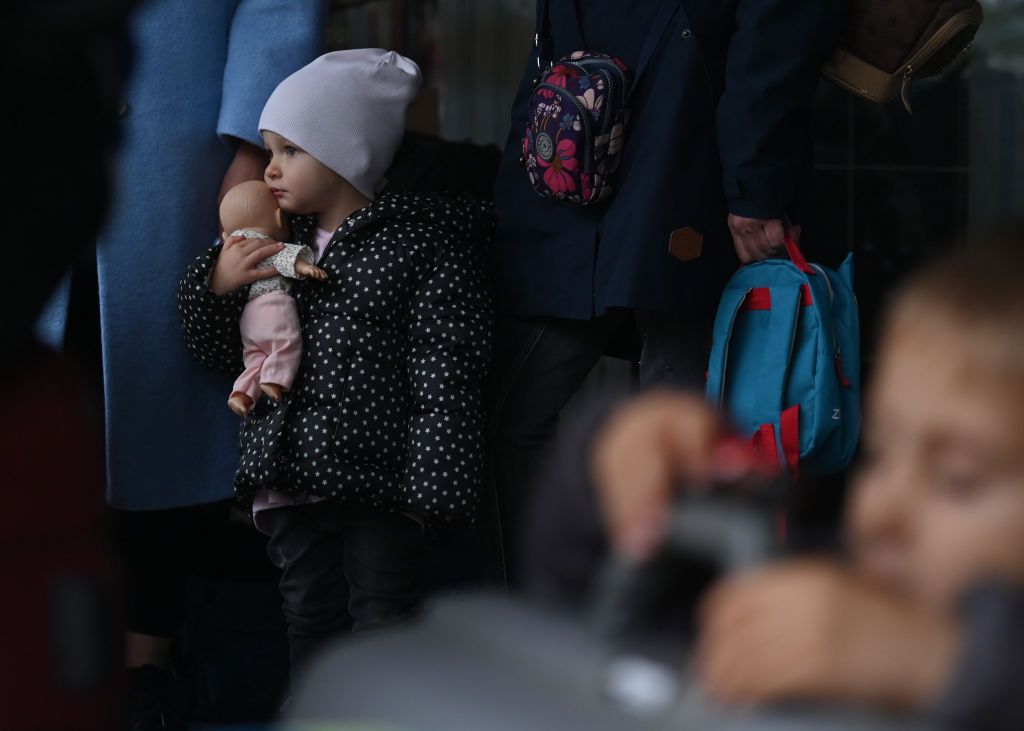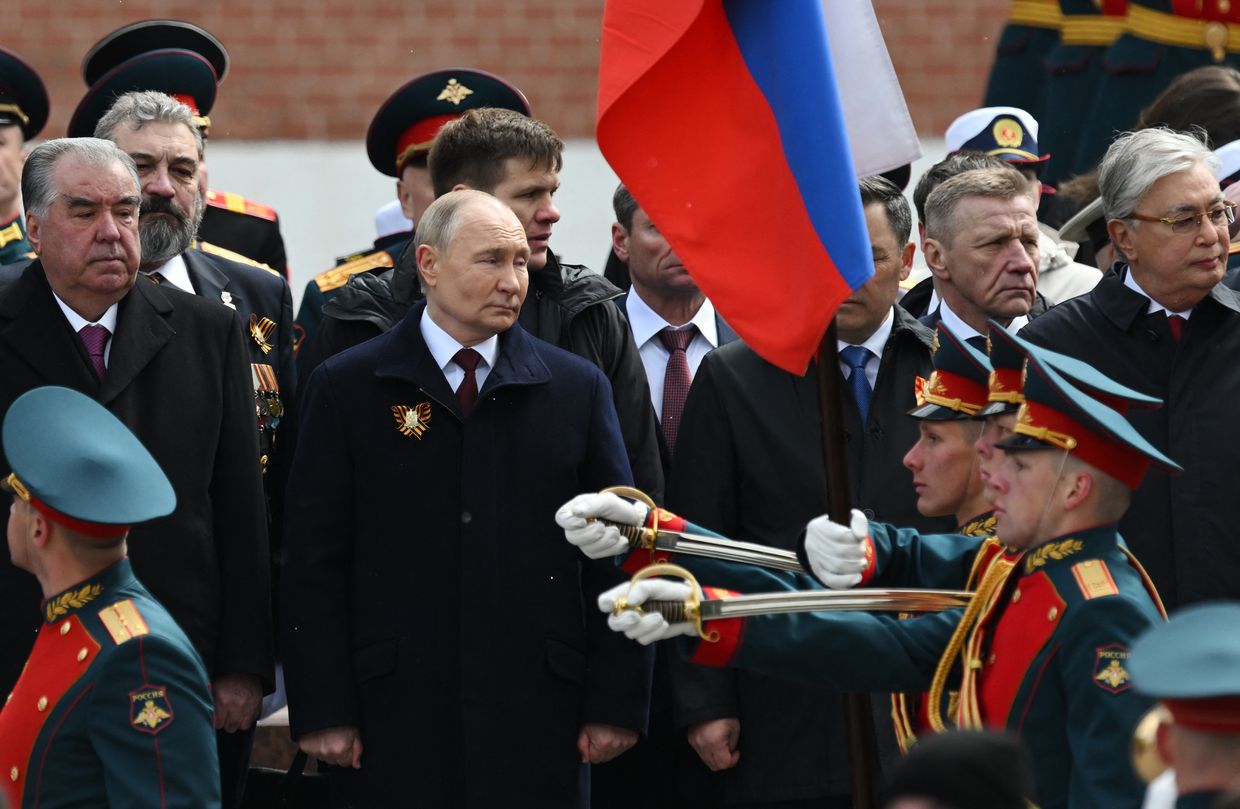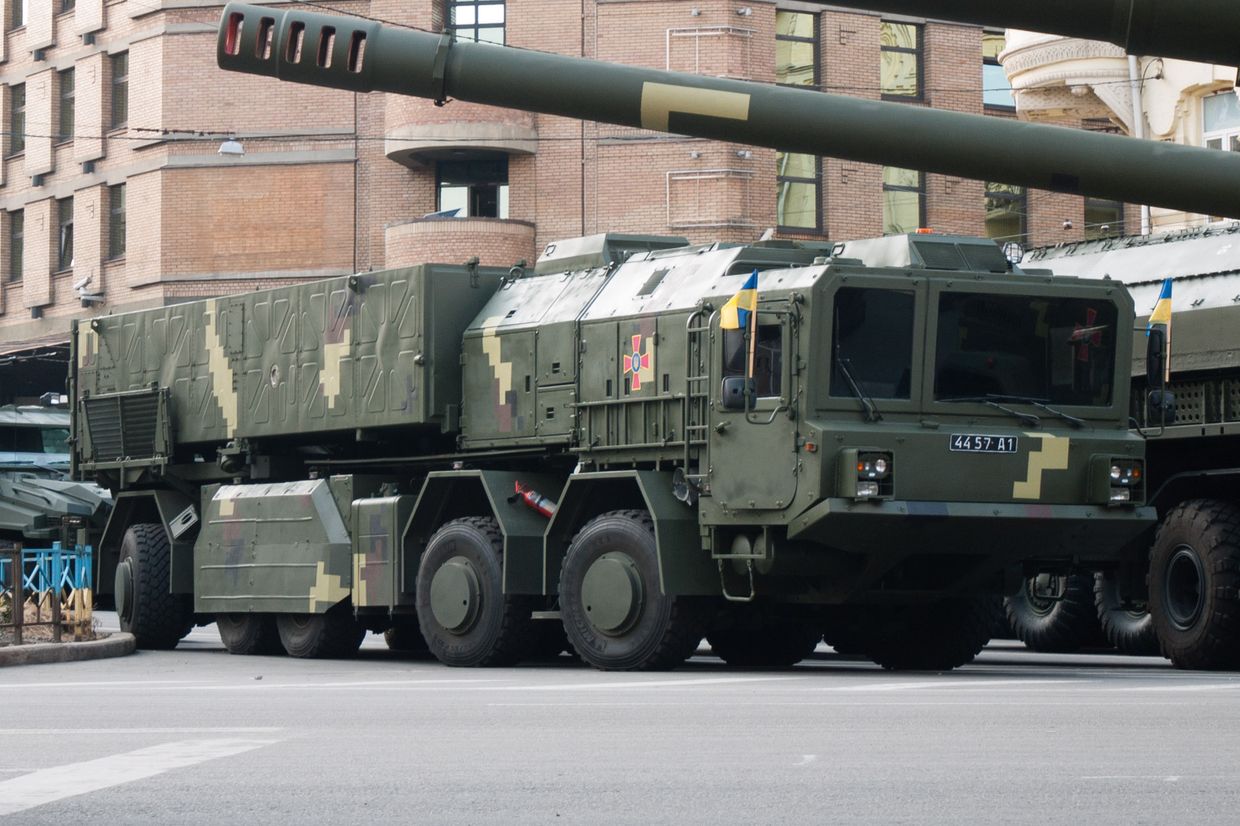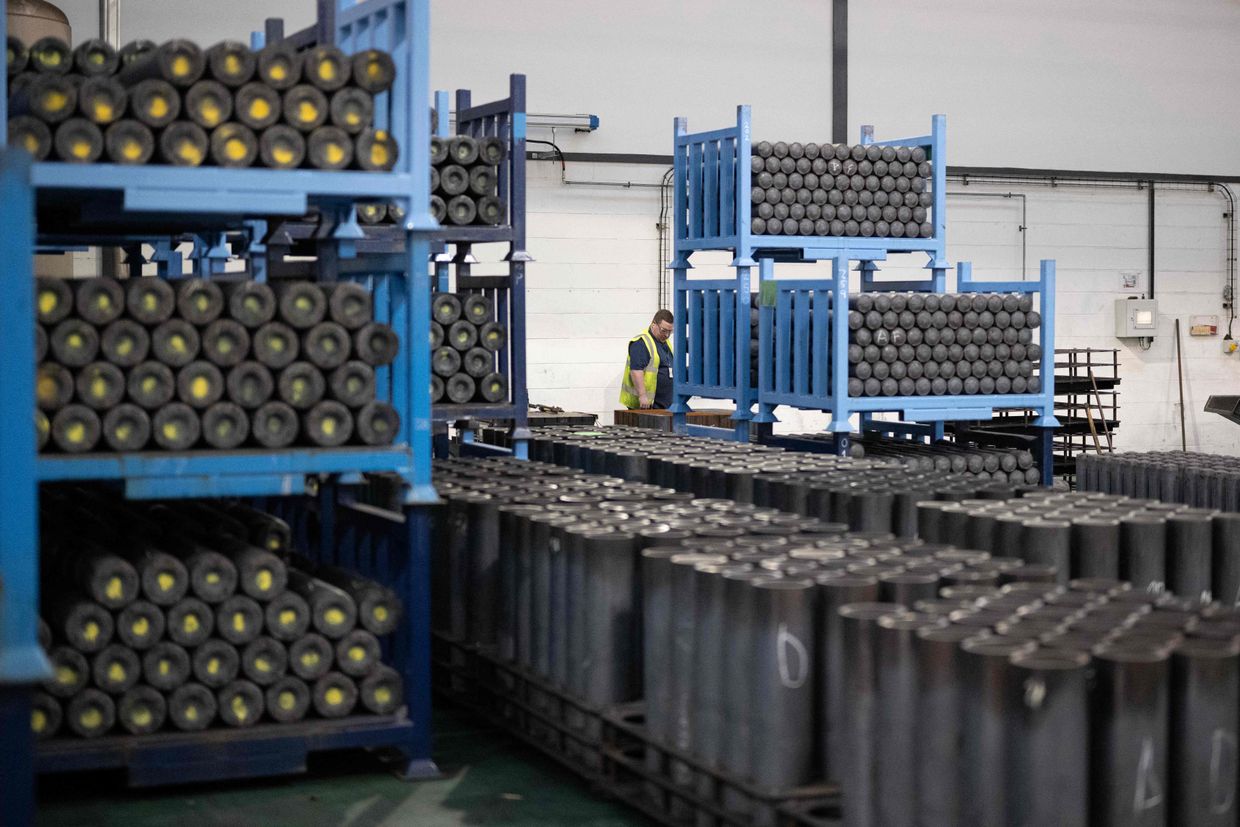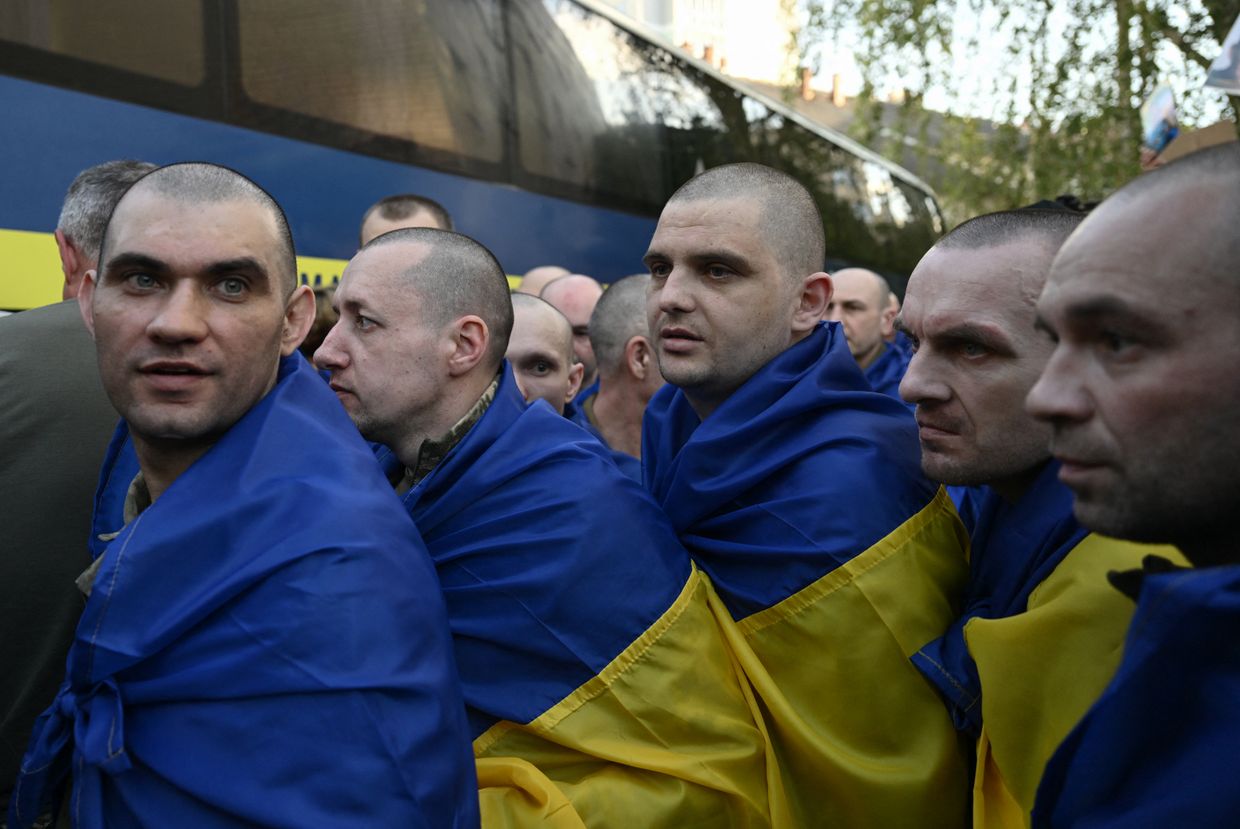Russia’s 10-year aggression against Ukraine has caused widespread and sure to be long-lasting damage to the country’s economy and demographics.
Positive growth predictions were squashed following Russia’s annexation of Crimea and invasion of Ukraine’s eastern Donbas region in 2014. Then came Russia’s full-scale invasion in February 2022, wreaking havoc on an economy that had just started to recover following the Covid-19 pandemic.
Nevertheless, the country’s financial sector and economy proved resilient, bouncing back in 2023.
The Kyiv Independent has visualized the various impacts of 10 years of Russia's war against Ukraine in charts.
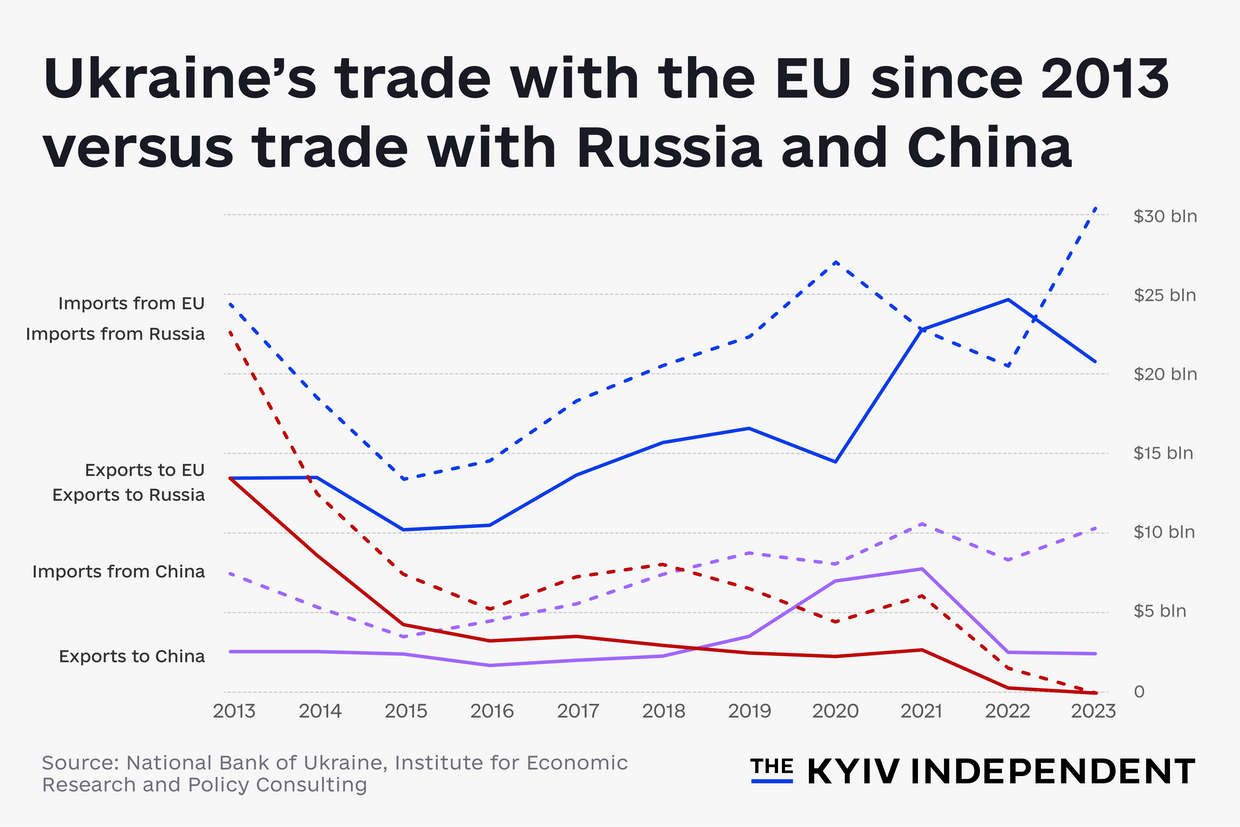
Ukraine had an important trade relationship with Russia under the leadership of pro-Kremlin President Viktor Yanukovych between 2010-2014. After his ousting during the EuroMaidan Revolution and Russia’s subsequent annexation of Crimea and invasion of Ukraine’s east, Kyiv began to look toward Europe.
In the years following, trade with Russia rapidly declined as it gradually increased with the European Union, particularly after the implementation of a free-trade agreement with the EU in 2017. Brussels further liberalized trade with Ukraine in response to Russia’s full-scale invasion in order to help the country’s struggling economy. Last year, Ukraine recorded a record level of imports from the EU.
Meanwhile, China has grown to replace the void left by Russia, particularly in Ukrainian barley, corn, and iron ore imports. Ukraine joined China’s Belt and Road initiative in 2017 with hopes of modernizing its transport system.
In 2021, President Volodymyr Zelensky told Chinese President Xi Jinping that he hoped Ukraine would become “a bridge to Europe for Chinese business." Beijing’s close ties to Moscow and unwillingness to overtly support Ukraine do not bode well for this relationship in the long run.

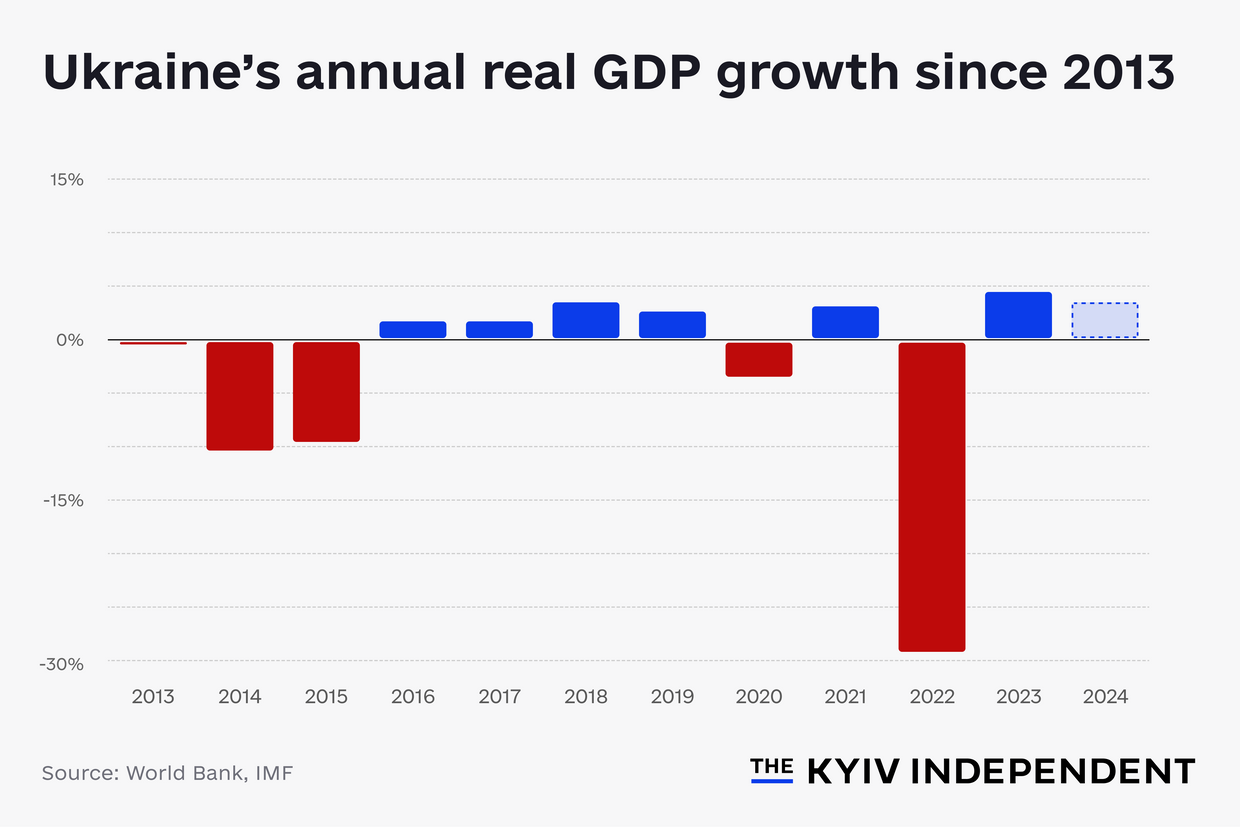
In early 2013, the World Bank projected Ukraine’s gross domestic product (GDP) growth would reach 3 percent in 2014 and 4 percent in 2015. Instead, Russia annexed the Crimean Peninsula in February 2014 and invaded Ukraine’s eastern Donbas region. These events dealt a major blow to the country’s GDP, which decreased year-on-year to $133.5 billion in 2014 and $91 billion in 2015.
The economy slowly recovered before the Covid-19 pandemic in 2020 when once again the GDP took a hit. In 2021, the economy began to bounce back, but the growth was short-lived: In 2022 with the onset of Russia’s full-scale invasion, the GDP decreased by a whopping 29%, the country’s largest decline since gaining independence in 1991.
The economy surprised many by bouncing back in 2023, which the World Bank predicts will continue into this year and the next, although growth depends on continued aid from Ukraine’s allies.
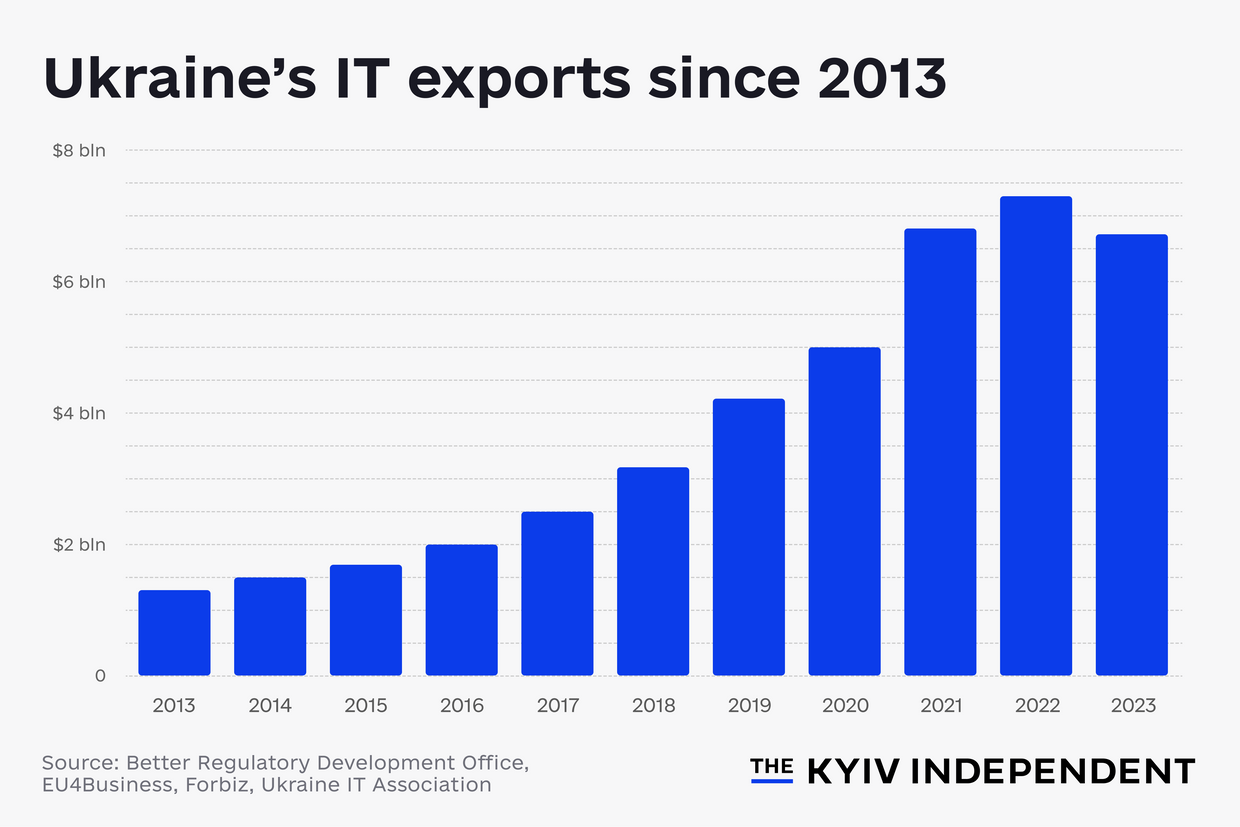
Ukraine established itself as an IT powerhouse at the end of the last decade breaking the $5 billion mark for the first time in 2020. The IT industry has grown to become one of the most important sectors in Ukraine’s economy and was highlighted in 2022 as one of the key pillars in Ukraine’s economic recovery.
While it was the only industry to grow in the first year of Russia’s full-scale invasion, the war’s consequences caught up in 2023. The ban on men between the ages of 18-60 from leaving the country has largely eliminated the possibility of business trips abroad while many are at risk of being drafted. Many IT workers are also currently involved in military projects leading to a workplace shortage.
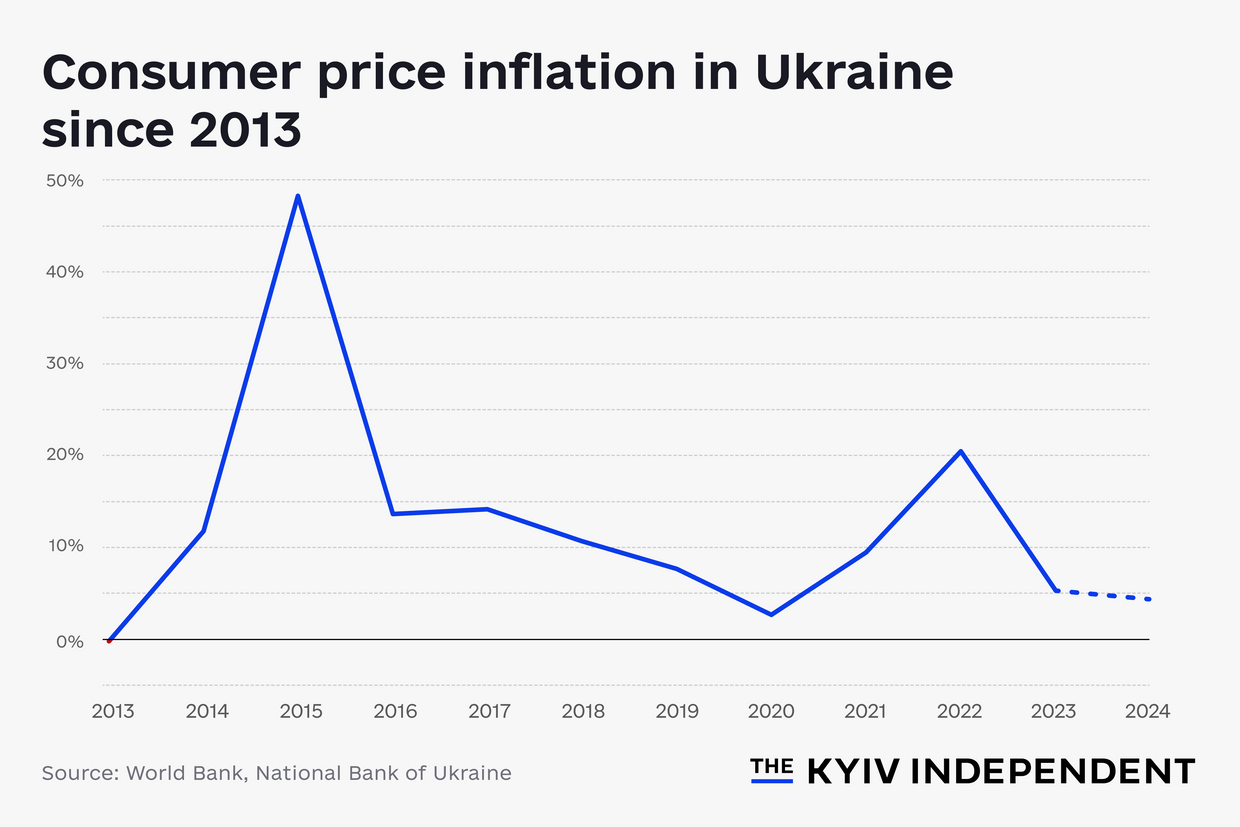
Inflation in Ukraine soared after the events of 2014-2015. After falling in the following years, Russia’s full-scale invasion caused inflation to jump again, although not to the levels seen in 2015. Inflation dropped to pre-war levels in 2023 thanks to policies enacted by the National Bank of Ukraine (NBU), good harvests, and lower global energy prices. The trend is expected to continue in 2024.

Ukraine’s international reserves skyrocketed last year to record levels thanks to international support and bond auctions. The EU, the U.S., Japan, the U.K, Canada, and Norway led the way in international support. The International Monetary Fund (IMF) approved a $15.6 billion loan program with Kyiv in April 2023, which has injected billions into Ukraine’s economy so far.
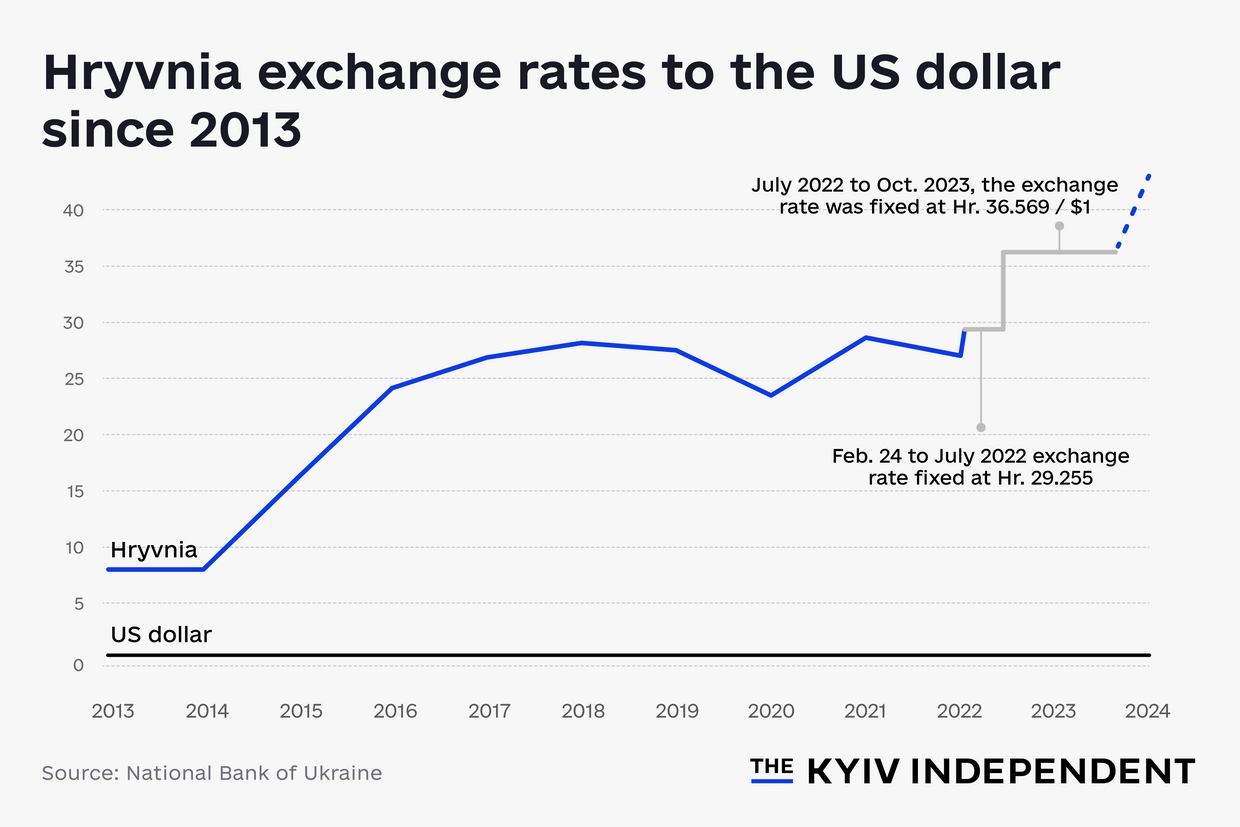
Under former President Yanukovych’s rule, Ukraine’s exchange rate was artificially maintained at Hr 8 to the U.S. dollar. After he was ousted, the fixed exchange rate was lifted and the hryvnia collapsed amid Russia’s annexation of Crimea and invasion of Donbas in 2014.
While it improved over the years, the NBU introduced a fixed exchange rate of Hr 29.255 / $1 after Russia’s full-scale invasion in 2022. The policy helped stabilize the economy and control inflation before the NBU introduced a new fixed rate of Hr 36.569/$1 at the end of July 2022. This remained in place until October 2023 when restrictions were lifted, allowing market-driven dynamics to dictate the exchange rate. The hryvnia dropped to a historic low in December 2023.
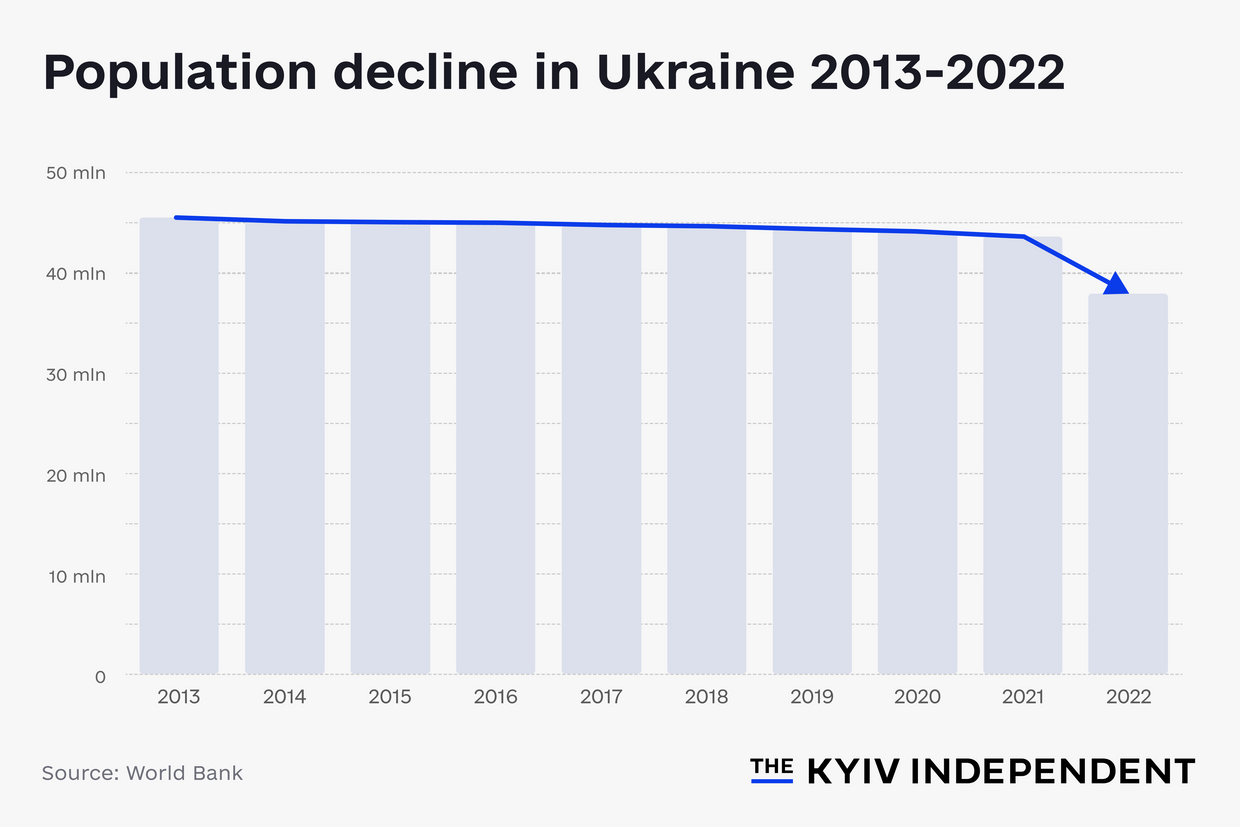
Ukraine’s demographic decline will be one of the major post-war crises. The country is at risk of losing millions of citizens who fled abroad which will likely hinder the recovery process. Even before the full-scale invasion, the country was losing hundreds of thousands of citizens every year seeking opportunities abroad. The situation is a Catch-22: Citizens will return if Ukraine’s economy and quality of life improve, but both of those things depend on population growth.
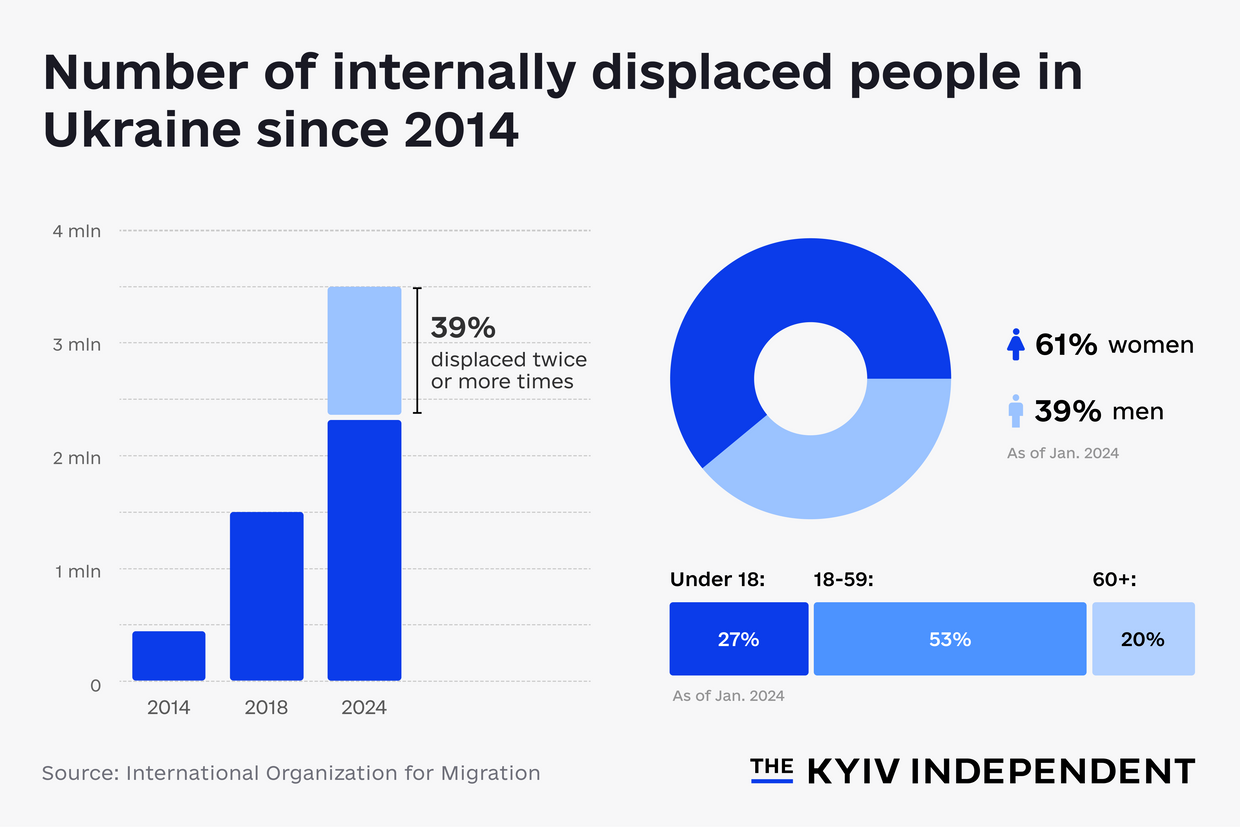
Russia’s annexation of Crimea and invasion of Donbas in 2014 started the crisis of internally displaced people (IDPs) in Ukraine. The numbers increased over the years before dramatically jumping in 2022 after the start of Russia’s full-scale invasion. Citizens fled from central, eastern, and southern regions, mostly to regions in western Ukraine and abroad. Russia’s destruction of people’s homes in front-line and occupied territories has forced many to relocate to new regions while others remain but live in temporary accommodation sites or crammed refugee housing.
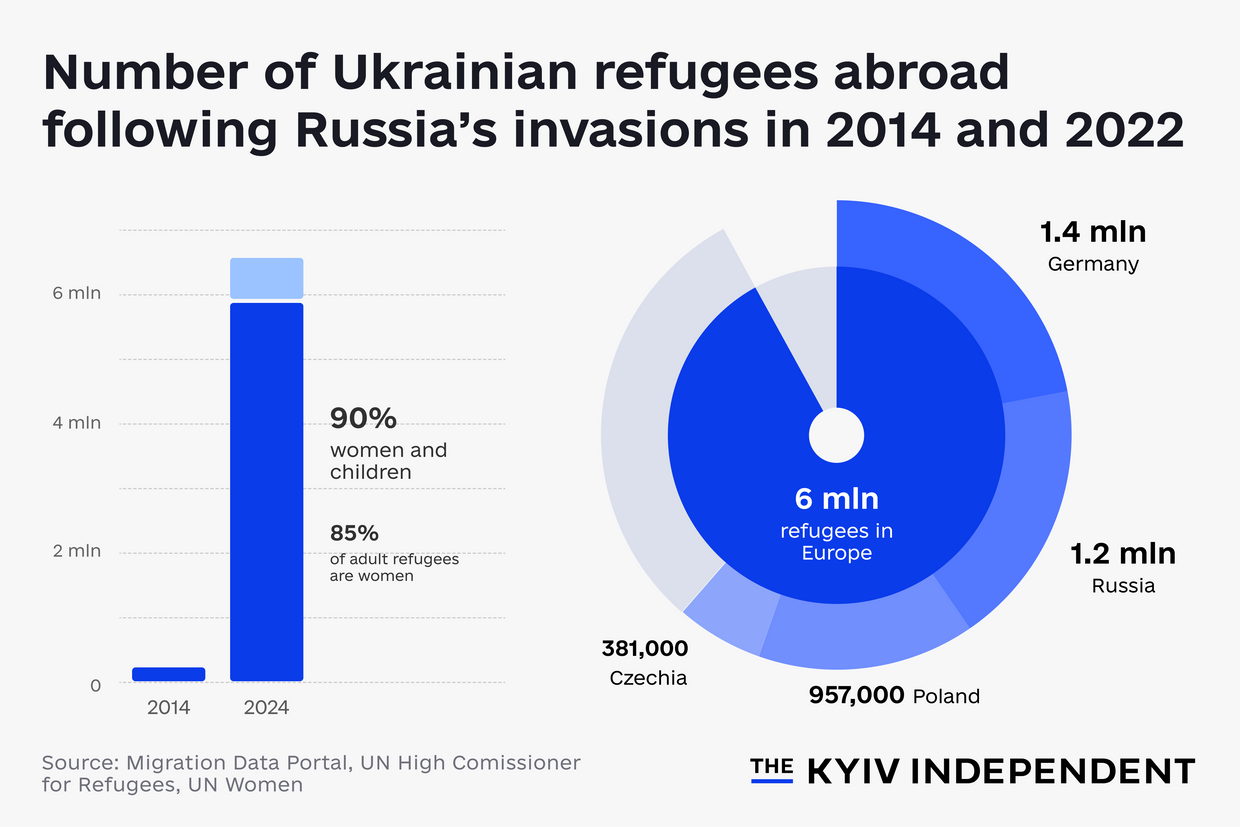
After Russia’s invasion of Donbas in 2014, many residents fled to neighboring Russia and Belarus. While Russia still hosts a large portion of Ukrainian refugees, many of whom have Russian family members, the majority fled westwards to the EU. Germany and Poland host the largest number of refugees in the EU, who in turn have bolstered the bloc’s workforce deficit.

After the liberation of territories in central, eastern, and southern Ukraine, many Ukrainians began to return both from abroad and from other regions in the country. The Ukrainian government is eager to encourage more people to return. But the longer the war drags on, the more likely it is that refugees will remain abroad. At the same time, an overwhelming amount of reconstruction work is needed in affected territories in order to ensure returnees have homes, jobs, and places to work.
